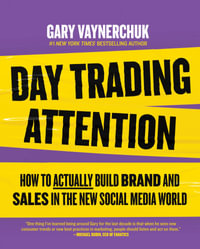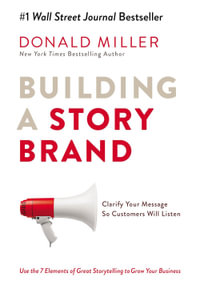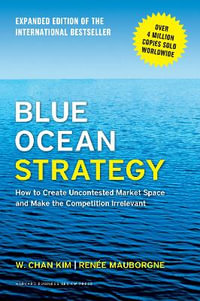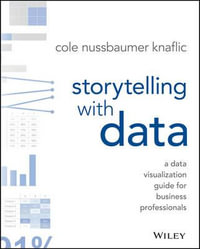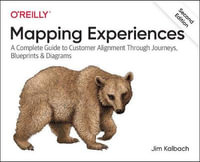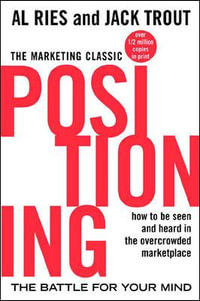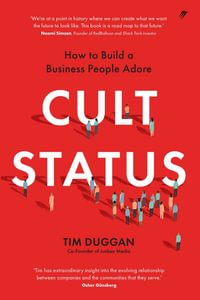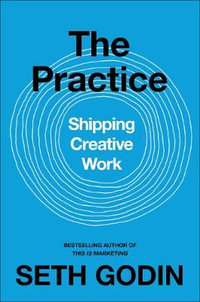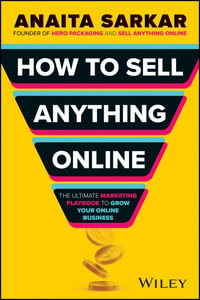PART I: STRATEGIC MARKETING AND ITS ENVIRONMENT.
1. Customer-Driven Strategic Marketing.
2. Planning, Implementing, and Evaluating Marketing Strategies.
3. The Marketing Environment, Social Responsibility, and Ethics.
PART II: MARKETING RESEARCH AND TARGET MARKETS.
4. Marketing Research and Information Systems.
5. Target Market Segmentation and Evaluation.
PART III: CUSTOMER BEHAVIOR AND E-MARKETING.
6. Consumer Buying Behavior.
7. Business Markets and Buying Behavior.
8. Reaching Global Markets.
9. Digital Marketing and Social Networking.
PART IV: PRODUCT AND PRICE DECISIONS.
10. Product, Branding, and Packing Concepts.
11. Developing and Managing Goods and Services
12. Pricing Concepts and Management.
13. Marketing Channels and Supply-Chain Management.
14. Retailing, Direct Marketing, and Wholesaling.
PART V: PROMOTION DECISIONS.
15. Integrated Marketing Communications.
16. Advertising and Public Relations.
17. Personal Selling and Sales Promotion.
Online Appendices.
Appendix A: Financial Analysis in Marketing.
Appendix B: Sample Marketing Plan.
Appendix C: Careers in Marketing.
Learning Path:
Self-Assessments: engage students by helping them make personal connections to the content presented in the chapter. Students are able to see how their responses compare to others (anonymously) in their class, school and across the country.
The chapter content serves as a foundation and reference source for the course. Concept Checks are short, automatically graded assessments that appear in-line in the reader and allow students to check their understanding of key concepts one section at a time before moving on. These concept-based questions also allow you to ensure students are familiar with those concepts before coming to class so you can go further with the time you have. There are also valuable study tools like highlighting, note taking, dictionary, flashcards, a text-to-speech tool, and more.
Chapter Assignment: These pre-built homework assignments include scenario-based questions with a variety of different problem types assessing comprehensive understanding of the entire chapter. These are automatically graded and include rejoinder feedback for right and wrong answers.
Video Quiz: Highlighting relevant companies, these videos and their corresponding activities help students solidify core chapter concepts by tying chapter themes or topics to real-world examples.
Study Tools: Students will find flashcards, lecture slides and Adaptive Test Prep, which allows students to ease the high anxiety that is often experienced around preparation for and taking exams.
You Make the Decision: Students are put in the shoes of a marketer in these interactive, media-rich activities. Following a scenario related to course content covered so far, students are presented with decision points as they progress through this interactive activity. Every decision a student makes impacts the outcome of the scenario, creating a unique marketing experience for each student. Appearing at the beginning of each part, these activities act as a summative opportunity, ultimately aiding students in connecting concepts from multiple lessons.
Group Projects and Role Play Activities: These video activities at the part level, powered by YouSeeU, are designed to take the headaches out of managing group dynamics, these group assignments can automatically place students into groups based on matching mutual availability. Students work in teams ' as they would in marketing ' to tackle assignments related to each major part covered in the course. Utilizing tools like scheduling and hosting virtual meetings, sharing documents and videos, and assigning milestones and tasks, these activities provide students with experience working in teams and utilizing real-world collaboration tools.
Marketing Plan Assignments: These flexible, modular assignments at the part level allow you to assign a complete marketing plan in stages ' or pick only specific sections to assign. Featuring fill-in-the-blank response fields

